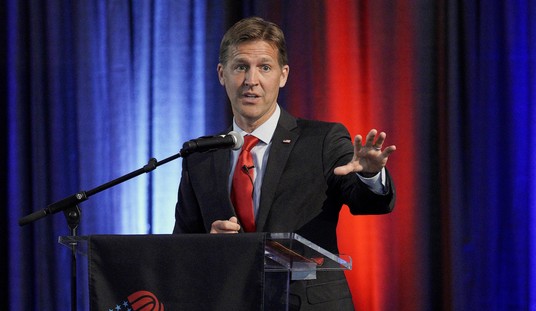What happens when the President of the United States spends six weeks and millions of dollars spinning horror stories about the economic impact of a 2.3% reduction in government spending? If you guessed “people spend less money,” you’d be right — and better at economic projection than media economists. To only their apparent surprise, retail sales dropped in March by the most in nine months:
The U.S. Census Bureau announced today that advance estimates of U.S. retail and food services sales for March, adjusted for seasonal variation and holiday and trading-day differences, but not for price changes, were $418.3 billion, a decrease of 0.4 percent (±0.5%)* from the previous month, but 2.8 percent (±0.7%) above March 2012. Total sales for the January through March 2013 period were up 3.7 percent (±0.5%) from the same period a year ago. The January to February 2013 percent change was revised from +1.1 percent (±0.5%) to +1.0 percent (±0.2%).
Retail trade sales were down 0.6 percent (±0.5%) from February 2013, but 2.6 percent (±0.8%) above last year. Nonstore retailers were up 13.5 percent (±2.3%) from March 2012 and auto and other motor vehicle dealers were up 7.4 percent (±2.1%) from last year.
Here’s the handy chart from Census showing the last three months’ activity:
Color Bloomberg surprised enough to break out the U-word:
Retail sales in the U.S. unexpectedly fell in March by the most in nine months as employment slowed, showing households ended the first quarter on softer footing.
The 0.4 percent decrease, the biggest since June, followed a 1 percent gain in February, Commerce Department figures showed today in Washington. The median forecast of 85 economists surveyed by Bloomberg called for an unchanged reading in March. Department stores and electronics dealers were among the weakest showings.
The figures may prompt economists, who are projecting consumer spending climbed in the first quarter at the fastest pace in two years, to reduce growth estimates. A pickup in hiring and bigger increases in wages will be needed to ensure any slowdown proves temporary as federal budget cuts and an increase in the payroll tax restrain the expansion.
Oh, please. The end of the payroll-tax holiday took place at the very beginning of January, not March. Those conditions existed for five solid weeks of increased withholding before February’s decent retail month; why would the impact just get around to showing up in March? The cuts in federal spending didn’t even affect government payrolls, which only lost 7,000 workers in March, thanks to 14,000 layoffs at the Post Office — which wasn’t hit by the sequester at all. This is sheer nonsense.
Reuters doesn’t do a lot better, wondering if the weather had as much impact as the PTH expiration:
Retail sales slid in March even though producer prices recorded their biggest drop in 10 months ias the cost of gasoline tumbled. …
The weakness in March retail sales was broad based, with car sales down 0.6 percent and receipts from electronics and appliance stores down 1.6 percent. Sales at clothing stores rose just 0.1 percent. …
Readings for retail sales have been volatile so far this year, making it difficult to know whether the weakness in March was due to a tax hike that went into effect at the start of the year or to temporary factors related to the weather.
February was pretty cold, too, as I recall. And the very next sentence from Reuters blows up their alternate cause:
Retail sales advanced 1 percent in February, according to revised readings from the government.
When politicians turn into Chicken Littles over slight reductions in government spending, people react by putting off their own purchases. Amazingly, neither Bloomberg nor Reuters even entertained this possibility in their analyses, even though many of us wrote about the damage the hyperbole would do.









Join the conversation as a VIP Member